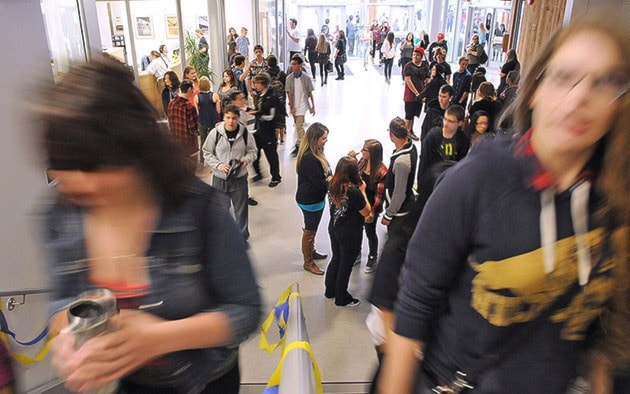It may be a "record level" year for school funding across the province, but it's done little to help the burgeoning Chilliwack School District.
Last week, B.C.'s ministry of education released a bullet point list of ways it's supporting learning this year, pointing out "education funding is at record levels."
"This coming school year (2016-17), total funding to school districts will reach $5.10 billion - up 32% since 2000-01," the ministry stated. "The average per-pupil funding is now an estimated $8,963, an increase of 42% since 2000-01."
It didn't take long for school boards and the BCTF to respond to that claim.
Silvia Dyck, Chilliwack's school board chair, said it's still "situation critical" here, where more than half of the school are above 100 per cent capacity. And it's capital funding that has the board concerned, she points out.
As the new school year looms, there is little free space for the new students expected to show up for class. Earlier this year, the board toured Education Minister Mike Bernier around Chilliwack, including a visit to Promontory elementary. The school is nowhere near big enough to handle the demand of the surrounding area, and the board asked for capital funding to build another floor to the school.
Even with that floor, some students would be in portables. As it stands, Promontory will have eight portables in operation this fall.
With no way to track summer movement of families, school boards are left guessing their enrollment each year. This year, they expect up to 300 students.
"We anticipate increased enrolment in K-12 for fall 2016," Dyck said. "In the last five years, Chilliwack School District has seen a steady increase in K-12 enrollment with a projected percentage increase of 2.5 per cent for September 2016, which for Chilliwack SD may mean 300 new students."
The funding amount highlighted in the Ministry of Education press release would have been alluding to the entire province, including capital and operating funding.
Surrey is the largest city in the province, and has recently received a large capital grant to build new education space for its growing student population. Six projects totalling $100 million will add 2,700 new student spaces in that city.
But Chilliwack's student base is growing at nearly twice the rate of Surrey. Surrey is expecting 1,000 new students this fall, says Dyck, in addition to their 70,000 plus student population.
Chilliwack is expecting 300 new students, in addition to the current 14,000.
The expected new student percentage is much greater, she says, "and therefore the need for student instructional spaces, (is) exponentially greater as well."
Chilliwack is also expected to continue growing. There are numerous housing projects underway, including a large new community at the former UFV site, several redevelopment sites in Popkum, and ongoing growth in Promontory and Garrison.
"We anticipate that this will continue to be a trend based on housing sales, new developments and increase in-migration of new students to the district," Dyck says.
But, just like every year, they won't know just how many new students to expect until that first bell rings.
"Over half of SD33 schools are at more than 100% capacity, with very few spaces available for new students," she notes.
Some of the school district's summer maintenance work included repurposing space at GW Graham to add a classroom, adding washroom space at Vedder middle, and adding portables to Vedder and Promontory elementary schools.
While the Chilliwack school board makes its case for capital funding, others are criticizing the Liberal government statement that education funding is at record levels.
The BCTF published a graph that shows operating grants dropping fairly consistently since 1999, in comparison to the GDP.
"Don't buy @BCLiberalCaucus "highest funding ever" line. As share of BC's economy, #bced funding is lowest since 2000" reads the BCTF tweet.
There will be more than half a million public school students in class next week, with an expected 2,900 students. The ministry estimates there will be 60,359 English Language Learning (ELL) students - 461 more than last year; 57,351 Aboriginal students - 345 more than last year; 27,260 students with special needs (eligible for supplemental funding) - 627 more than in last year; and 3,327 non-graduated adult students - 92 fewer than last year.
